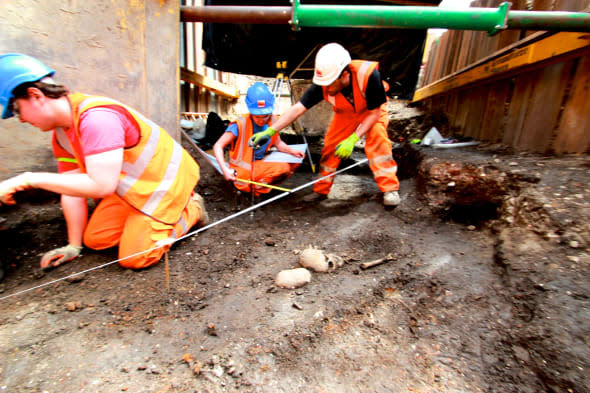Crossrail to excavate burial ground

Remains of a former lord mayor of London as well as those of a notorious criminal and political activists could be unearthed when excavation of an infamous burial ground is undertaken by the cross-London Crossrail project.
Crossrail-led research has identified the names and backgrounds of more than 5,000 people buried at the old Bedlam site at Liverpool Street in London.
Names include Sir Ambrose Nicholas, who was lord mayor of London in 1575, and Dr John Lamb (also known as Lam or Lambe), an astrologer and advisor to the First Duke of Buckingham. Words: PA
Lamb was said to have been stoned to death by an angry mob outside a theatre in 1628 following allegations of rape and black magic.
Others identified in the research, carried out by 16 invited volunteers and covering burials in the 16th and 17th centuries, include victims of riots by "Fanatiques", noted in the diaries of Samuel Pepys in January 1661.
The Crossrail team will use the information when work to excavate 3,000 skeletons from the Bedlam site starts next month.
Bedlam burial ground was established in 1569 to help parishes cope with overcrowding during outbreaks of plague and other epidemics.
Crossrail workers recently discovered the gravestone of Mary Godfree, who died in September 1665 as a result of the Great Plague which peaked that year.
Jay Carver, lead archaeologist at Crossrail, said: "This research is a window into one of the most turbulent periods of London's past.
"These people lived through civil wars, the Restoration, Shakespeare's plays, the birth of modern industry, plague and the Great Fire
"It is a real privilege to be able to use Europe's largest construction project to uncover more knowledge about this fascinating period of history.
"Our heartfelt thanks go to the volunteer researchers, who have contributed immensely to Crossrail's legacy."
The archaeological excavations at Liverpool Street are being undertaken by Museum of London Archaeology on behalf of Crossrail.
Scientific analysis of up to 3,000 skeletons will provide new insights into the lives and deaths of early modern Londoners.
The upcoming dig is also expected to uncover medieval and Roman artefacts, and help piece together centuries of history. After excavation, the skeletons will be reburied on consecrated ground.
To date, Crossrail, which will be fully opened in 2019, has found more than 10,000 artefacts from London's long history across over 40 construction sites.
Related stories
Taxpayers forced to pay £160million extra for London's Crossrail
Wales' longest rail tunnel to reopen as tourist attraction






